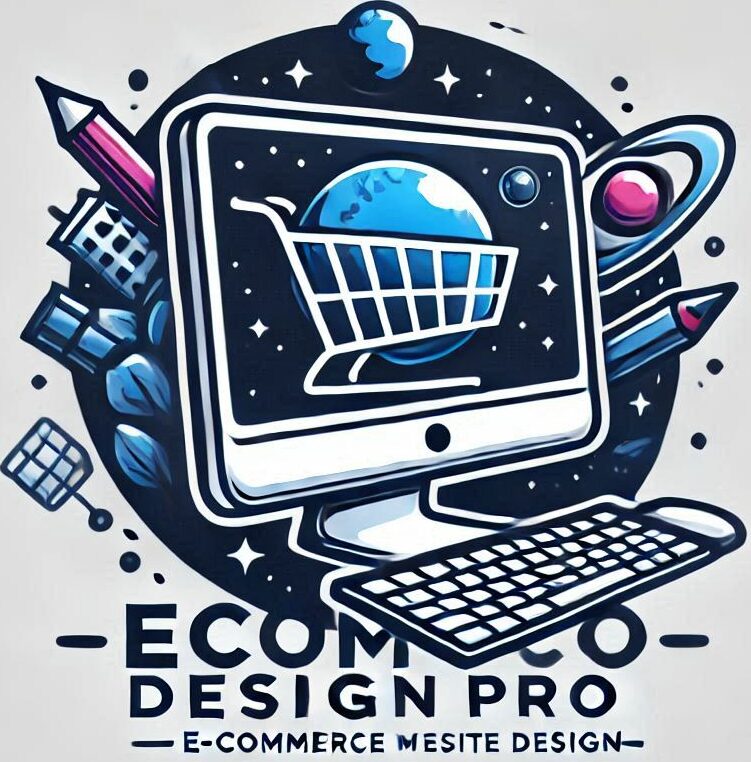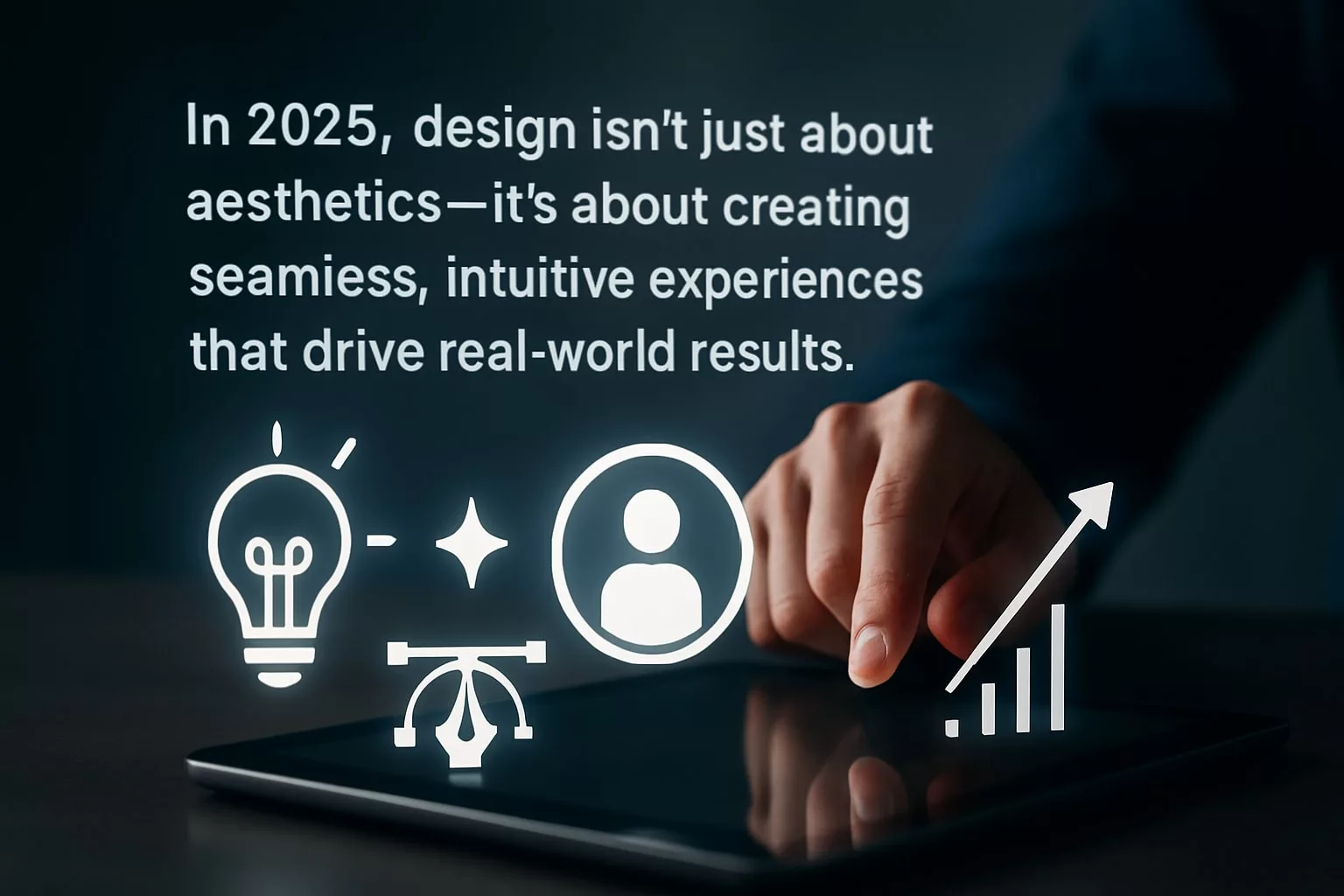In 2025, design is transforming beyond visuals to deliver meaningful, intuitive experiences that truly drive results. The design user faces a landscape shaped by rapid innovation, from AI-powered personalization to sustainable and inclusive practices.
This guide brings you expert insights and practical steps to master user-centered design, whether you are just starting or advancing your career. Discover the essentials—from foundational principles to the latest trends and research-backed strategies—so you can confidently create experiences that matter.
Stay ahead of the curve and use these actionable insights to become a leader in the evolving world of design.
The Foundations of Modern User-Centered Design
User-centered design is at the heart of every successful digital experience in 2025. To build products that truly delight, a design user must understand the evolution of UX, the principles that drive engagement, and the role of research in shaping solutions. Let’s explore the core elements that define modern user-centered design.

Understanding User Experience (UX) and User Interface (UI)
UX and UI are often used interchangeably, but they have distinct meanings. Don Norman, who coined the term "user experience," defines UX as encompassing all aspects of a person's interaction with a product or service. UI, in contrast, focuses on the look, feel, and interactivity of the interface itself.
A design user must recognize that UX is broader than UI. It involves branding, usability, function, and emotional response. For example, the iPhone’s success is not just due to its sleek interface but its seamless integration of hardware, software, and user expectations.
According to ISO 9241-210, user experience includes a person’s perceptions and responses resulting from the use of a product. These responses can determine whether a product succeeds or fails. In practice, balancing visual appeal with intuitive function is essential for engaging users and building brand loyalty.
The Evolution of Design Thinking
Modern design user practices have roots in early human-computer interaction (HCI). Over time, cognitive psychology, ergonomics, and storytelling began to shape the way designers approached problems. Empathy and iteration emerged as pillars of design thinking.
Historical milestones, like the graphical user interface developed at Xerox PARC or Apple’s focus on simplicity, transformed the field. These examples show how innovative thinking can redefine entire industries.
Today, multidisciplinary teams are standard. Designers, engineers, researchers, and business strategists collaborate to create holistic solutions. This evolution has made the design user role more dynamic and impactful, requiring adaptability and a commitment to continuous learning.
Key Principles of User-Centered Design
Successful user-centered design is built on several foundational principles:
- Usability: Ensure products are easy to use and understand.
- Accessibility: Design for all users, including those with disabilities.
- Desirability: Create experiences that users love and return to.
- Utility: Deliver real value by solving genuine problems.
A design user should focus on the entire user journey, not just isolated interactions. This includes designing for emotion and delight, which can transform ordinary experiences into memorable ones. Addressing user pain points is crucial, as products with strong UX can increase conversion rates by up to 400 percent, according to competitor data.
Inclusivity and diversity are non-negotiable. By considering a wide range of needs and backgrounds, designers can ensure their solutions have maximum reach and impact.
The Role of Research and Data in Design Decisions
Research is the backbone of effective design user processes. It helps teams move beyond assumptions and uncover real user needs. Common methods include surveys, interviews, usability testing, and analytics.
For instance, a design user might conduct interviews to map customer journeys or analyze behavioral data for actionable insights. Usability testing and A/B experiments provide evidence for what works and what needs improvement.
Case studies show that research-driven design leads to breakthrough results. The process is inherently iterative: teams test, learn, refine, and repeat. To master these strategies, explore resources like Mastering user experience design, which offers expert insights into research, testing, and practical application.
By grounding decisions in data and real-world feedback, design user professionals can create experiences that stand the test of time.
Essential Design Trends and Technologies for 2025
Staying ahead as a design user in 2025 means understanding and adopting the latest trends and technologies. From AI-driven experiences to sustainable practices, these innovations are shaping how designers approach every project. Explore the essential trends that will define the design user landscape in the coming year.

Artificial Intelligence and Personalization in Design
Artificial intelligence is transforming how every design user interacts with digital products. AI-driven personalization tailors content, recommendations, and interfaces to individual preferences, creating more engaging experiences. For example, streaming platforms use AI to suggest content, while e-commerce sites employ recommendation engines that boost conversion rates.
AI-powered chatbots are now essential for real-time support, answering user queries instantly and improving satisfaction. Dynamic interfaces adapt layouts and features based on behavior, making each design user feel understood. Ethical AI is crucial, with privacy and transparency at the forefront.
According to recent data, 63 percent of organizations plan to increase AI investment in design by 2025. Curious how this impacts e-commerce? Learn more about AI-powered personalization in e-commerce to see these strategies in action. Staying current with AI ensures every design user delivers relevant, delightful experiences.
Cross-Platform and Omnichannel Experiences
Today’s design user must create seamless experiences across web, mobile, voice, and IoT devices. Responsive design and progressive web apps ensure content adapts to any screen size, while adaptive layouts maintain usability and visual appeal.
Brands like Spotify set the standard, offering consistent experiences whether users access them on a smartphone or desktop. However, maintaining brand identity and user experience consistency across channels can be challenging. For global and e-commerce brands, this is especially vital, as customers expect smooth transitions between platforms.
A design user who masters cross-platform strategies builds products that are accessible and reliable everywhere. This approach increases satisfaction and loyalty, positioning brands for success in an interconnected world.
Sustainable and Ethical Design Practices
Sustainability is now a core focus for every design user. Eco-friendly materials, energy-efficient interfaces, and minimalistic design choices reduce environmental impact. Features like dark mode not only save energy but also enhance user comfort.
Accessibility and inclusivity are ethical imperatives. Meeting WCAG standards ensures products are usable by all, including those with disabilities. For example, proper color contrast and keyboard navigation are essential for compliance. Data shows that 40 percent of users prefer brands with visible sustainability efforts.
A design user who prioritizes ethical and sustainable practices not only meets legal and social expectations but also builds trust with a broader audience. This commitment is key for long-term brand strength.
Visual and Interaction Design Innovations
Innovation in visual and interaction design is redefining what’s possible for the design user. Micro-interactions and motion design add delight and guide users through tasks. Immersive interfaces, including AR and VR, are becoming more mainstream, offering fresh ways to engage audiences.
Elements such as visual hierarchy, color theory, and typography remain foundational. Companies like Apple use features like the dynamic island to showcase how animation can improve usability and capture attention. Material Design’s motion guidelines highlight the balance between creativity and clarity.
A design user who embraces these innovations delivers memorable, intuitive experiences. The right blend of new technology and proven principles drives both engagement and satisfaction.
Data-Driven and Iterative Design Processes
For a design user, data-driven processes are essential for success. Analytics, A/B testing, and user feedback loops reveal what works and what needs improvement. Tools like heatmaps, session recordings, and usability metrics provide actionable insights.
Case studies show how iterative redesigns based on data can dramatically improve key performance indicators. Rapid prototyping and continuous testing help refine solutions before full-scale launch.
By embracing analytics and iteration, the design user ensures products evolve with user needs and business goals. This mindset of ongoing optimization is vital for thriving in 2025’s competitive landscape.
Step-by-Step Guide to Designing for the Modern User
Designing for today’s user means more than creating something that looks good. The process is a structured journey, guiding each design user through a series of focused steps. These steps ensure that products are not only visually appealing but also functional, accessible, and meaningful. Let’s walk through this modern approach, where understanding and responding to real user needs is at the heart of every decision.

Step 1: Empathize—Conducting User Research
Empathy is the starting point for every successful design user journey. To truly understand your audience, combine both qualitative and quantitative research methods. This includes:
- In-depth user interviews
- Online surveys
- Observational studies
- Analytics review
Building detailed personas and mapping customer journeys help teams visualize pain points and motivations. Empathy maps can reveal emotional drivers and expectations that influence design user decisions.
Bias reduction is essential. Use diverse sampling and open-ended questions to collect honest feedback. Tools like eye tracking can provide advanced insights into user attention and engagement, as detailed in Unlocking user engagement with eye tracking.
Ultimately, thorough research leads to actionable insights, setting the foundation for the entire design user process.
Step 2: Define—Identifying User Needs and Problem Statements
Once research is complete, synthesize findings to clarify the core problems. Defining user needs is about translating insights into clear, actionable statements. For a design user, this might look like:
- “As a user, I need to quickly find product information.”
- “As a design user, I want intuitive navigation.”
Crafting precise problem statements and user stories ensures alignment between business goals and user expectations.
This stage is critical because an accurately defined problem steers the project in the right direction. It also prevents wasted effort and supports measurable results. Competitor frameworks often recommend involving multidisciplinary teams to validate and refine problem definitions for the best outcomes.
Step 3: Ideate—Generating Creative Solutions
With problems clearly defined, it’s time for the design user to explore solutions. Encourage creativity through:
- Brainstorming sessions
- Sketching ideas
- Collaborative workshops
Design sprints, such as those pioneered by Google Ventures, help teams iterate quickly and produce a range of concepts. Including diverse perspectives leads to more innovative ideas and uncovers unique opportunities.
Prioritize solutions based on feasibility and potential impact. The design user should focus on ideas that balance ambition with practicality, ensuring that selected concepts address real needs and are achievable within project constraints.
Step 4: Prototype—Building and Testing Concepts
Prototyping transforms ideas into tangible experiences. For a design user, this means creating both low-fidelity and high-fidelity prototypes to visualize and test solutions.
Popular tools include:
- Figma
- Sketch
- Adobe XD
Start with wireframes or clickable prototypes to gather initial feedback. Rapid prototyping enables the design user to make adjustments before investing in full development. This step is iterative, with each version refining usability, functionality, and visual appeal.
Early and frequent testing ensures that design user concepts evolve to better meet real-world needs, reducing risk and improving outcomes.
Step 5: Test—Validating and Iterating Designs
Testing is where concepts meet reality. The design user validates ideas through usability testing, including:
- Moderated sessions
- Unmoderated/remote tests
- A/B testing
Key metrics to track:
- Task success rate
- Time on task
- User satisfaction
Gather feedback from real users, document findings, and iterate on the design user solution. Iterative testing can reduce development costs by 50 percent, making this phase critical for efficiency and effectiveness.
Continuous improvement is the goal. Each round of testing brings the design user closer to an optimal, user-centered product.
Step 6: Launch and Monitor—Post-Release Optimization
The design user’s work is not finished at launch. Ongoing monitoring and optimization keep products aligned with user needs.
Track key metrics such as:
- Engagement
- Retention
- Conversion rates
Use tools like heatmaps, NPS surveys, and customer reviews to identify areas for improvement. Real-world case studies show that attentive post-launch monitoring leads to higher satisfaction and loyalty.
Support does not end after release. The design user should schedule regular reviews, update features, and respond to user feedback for continuous enhancement.
Accessibility, Inclusivity, and Global Design Standards
Creating an exceptional design user experience in 2025 requires more than visual appeal. True impact comes from making digital products accessible, inclusive, and adaptable to users worldwide. As expectations rise, meeting global standards is not just ethical but also essential for reaching broader audiences and sustaining growth.

Designing for Accessibility (WCAG and Beyond)
Accessibility ensures every design user, regardless of ability, can interact with products effectively. The Web Content Accessibility Guidelines (WCAG) set the benchmark for digital accessibility, covering essential areas like keyboard navigation, screen reader compatibility, and sufficient color contrast.
Globally, 15% of people live with a disability, making accessibility a business priority and a legal requirement in many regions. Meeting these standards supports compliance and opens products to wider audiences. Tools like automated accessibility checkers and manual testing can help teams identify and fix barriers early.
For those seeking actionable strategies, Inclusive design principles for accessibility offers a comprehensive approach that benefits every design user, not just those with disabilities. Prioritizing accessibility is fundamental to building trust and delivering seamless experiences.
Inclusive Design for Diverse Audiences
Inclusive design goes beyond accessibility by considering the full spectrum of human diversity—age, culture, language, and ability. While accessibility focuses on removing barriers, inclusivity aims to proactively design user experiences that resonate with everyone.
Examples include multilingual interfaces, culturally appropriate imagery, and adjustable font sizes. Companies embracing inclusive design expand their reach and foster customer loyalty. Industry leaders show that inclusive practices can significantly increase market share and engagement.
Adopting principles from Neuroinclusive Design helps address the needs of neurodiverse users, ensuring a truly welcoming environment. The business case is clear: inclusive design user strategies drive innovation and open new growth opportunities.
Globalization and Localization Strategies
Reaching a global audience means adapting design user interfaces for various languages, currencies, and cultural contexts. Globalization establishes a consistent framework, while localization customizes content to fit regional needs.
Challenges include translating text, formatting dates and currencies, and respecting cultural norms. Leading brands succeed by using localization tools and frameworks that streamline adaptation. SEO and user trust also improve when products feel native to each market.
Successful design user experiences require ongoing collaboration between design, content, and engineering teams. As global standards evolve, continuous learning and adaptation are vital to meeting user needs everywhere.
Measuring Success: Metrics and KPIs for Design in 2025
Understanding how to measure the effectiveness of your design user strategy is essential for ongoing success in 2025. The right metrics provide actionable insights, guiding teams to make data-driven decisions and continuously refine experiences. Let us explore the essential KPIs, tools, and best practices for turning insights into results.
Key Performance Indicators for User Experience
Key performance indicators (KPIs) are the backbone of any successful design user initiative. They help teams assess how well a product meets user needs and business goals. Common KPIs include Net Promoter Score (NPS), Customer Satisfaction (CSAT), Customer Effort Score (CES), task completion rate, and bounce rate.
For design user projects, it is critical to set measurable goals before launching any new feature or redesign. For example, an e-commerce team might track conversion rates, while a SaaS product manager reviews onboarding success rates. According to industry benchmarks, products with strong user-centered KPIs can see significant improvements in retention and growth.
Continuous measurement ensures that the design user approach remains aligned with user expectations and drives lasting value. For a deeper understanding of key principles, see User-Centered Design Principles.
Tools and Methods for Data Collection
Collecting reliable data is vital for any design user evaluation process. Leading analytics platforms like Google Analytics, Hotjar, and Mixpanel offer both quantitative and qualitative insights. Quantitative data, such as funnel analysis and click rates, reveals what users are doing, while qualitative methods like user surveys and heatmaps explain why they act that way.
To ensure a holistic view, design user teams often combine these methods. For instance, heatmaps can highlight areas of confusion, while surveys gather direct feedback on satisfaction. Integrating analytics into the design cycle allows teams to detect pain points early and adapt rapidly.
Competitor workflows often leverage a mix of automated and manual data collection, ensuring that no critical insight is missed. This data-driven approach empowers design user teams to make informed choices at every stage.
Turning Insights into Actionable Improvements
Translating insights into meaningful changes is where a design user strategy delivers its greatest impact. Start by interpreting data with frameworks like ICE scoring or an impact/effort matrix. These help prioritize updates that offer the most value for the least effort.
For example, iterative updates based on user feedback can lead to measurable KPI improvements. Real-world redesigns that focused on specific pain points have shown clear growth in engagement and retention. Cross-functional collaboration is essential, ensuring that designers, developers, and stakeholders align on changes and goals.
Ongoing optimization is key for design user success in 2025. Teams that regularly revisit analytics and user input are positioned to adapt quickly and maintain a competitive edge. Remember, the journey of optimizing for the design user never truly ends—continuous improvement is what sets leaders apart.



